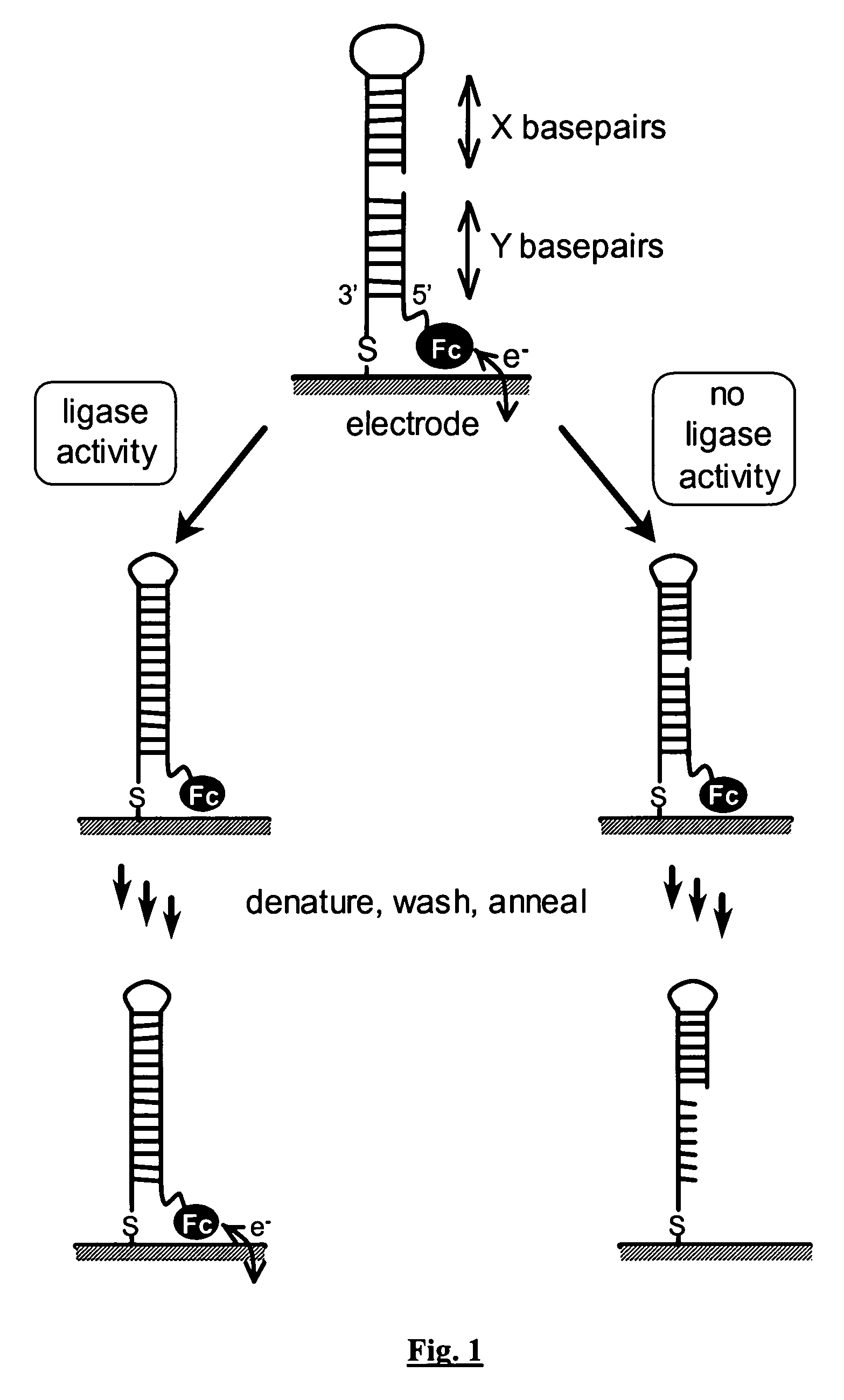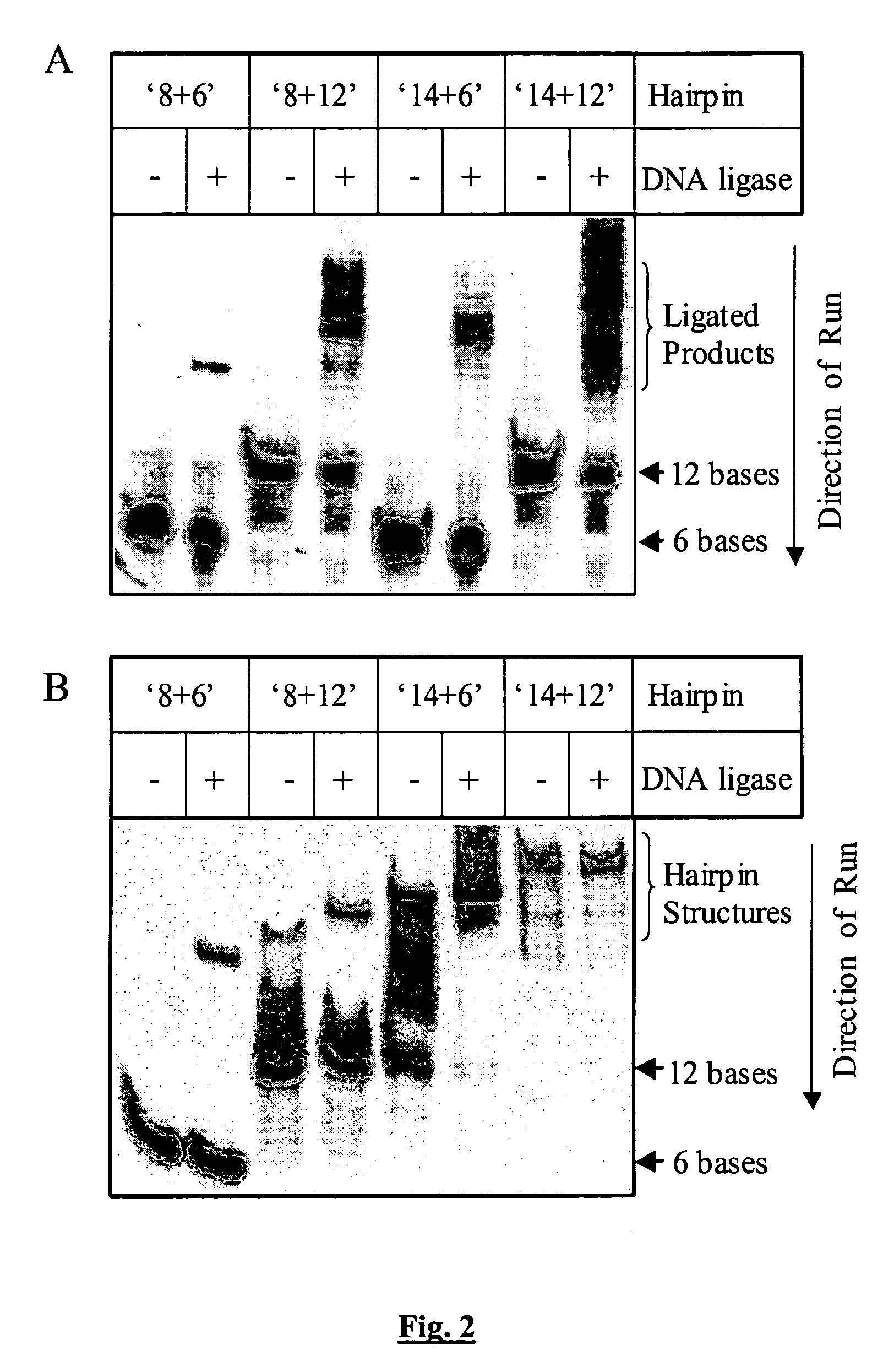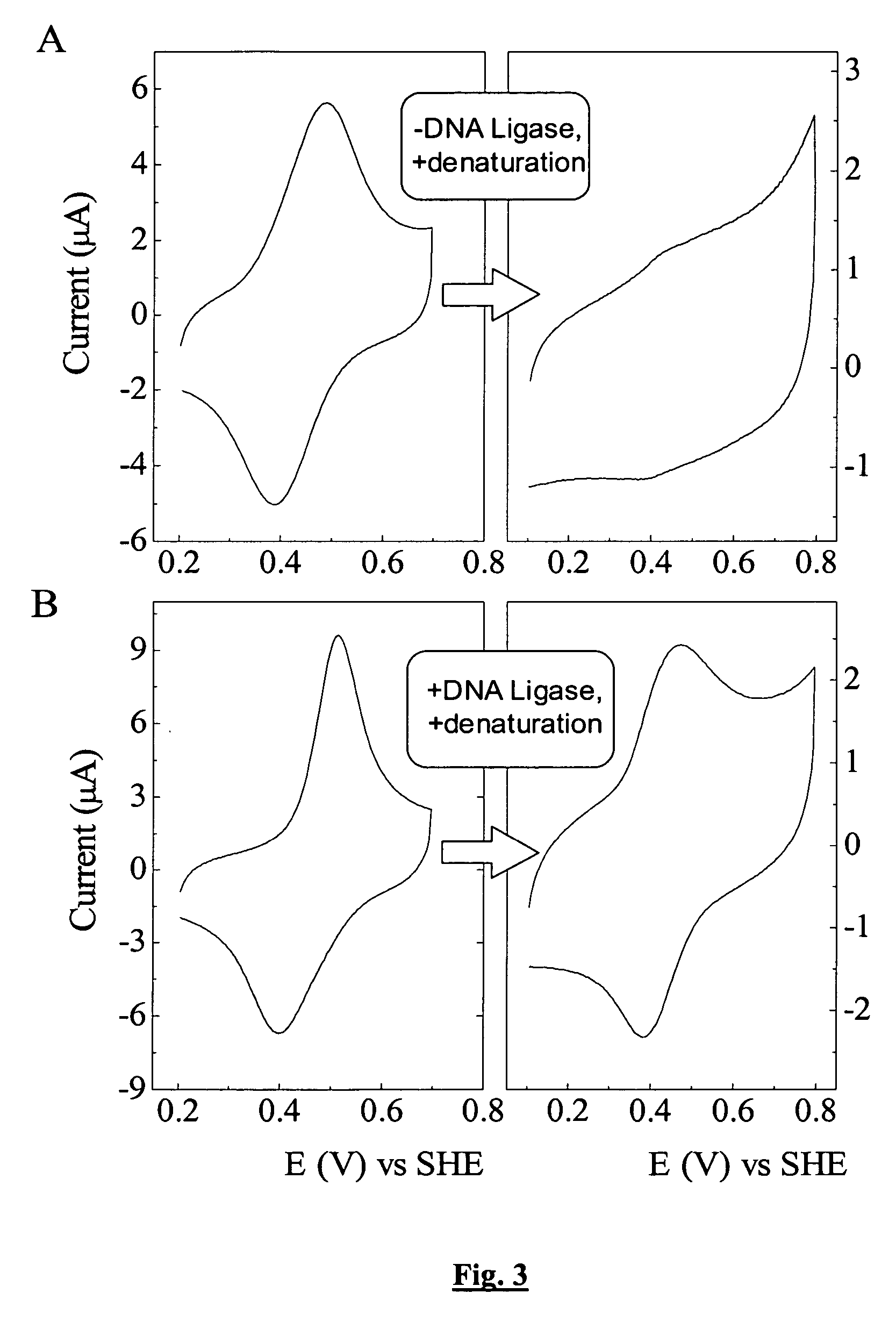Assay for nucleic acid ligase and nucleic acid nuclease
- Summary
- Abstract
- Description
- Claims
- Application Information
AI Technical Summary
Benefits of technology
Problems solved by technology
Method used
Image
Examples
example 1
Tethered DNA Hairpins Facilitate Electrochemical Detection of DNA Ligation
[0068] In a first example, the invention employs a nicked DNA hairpin as the ligase substrate, as shown in FIG. 1. The hairpin is tethered to a gold electrode through a terminal thiolate. A ferrocene label at the remote terminus provides a redox reporter for rapid characterisation of DNA status by cyclic voltammetry. Successful ligation of the DNA substrate is indicated by retention of the ferrocene couple after incubation with DNA.
Experimental Protocols
Materials
[0069] Expression and purification of the NAD+-dependent DNA ligase, LigA, from Escherichia coli was as described previously (Wilkinson et al., 2003, Proteins: Structure, Function & Genetics 51: 321-326; Lavesa-Curto et al., 2004, Microbiol. 140: 4171-4180). Oligonucleotides A-J (see Table 1) were supplied by MWG Biotech or SIGMA-Genosys. All other reagents were of Analar quality or equivalent and water was of resistivity >18 MΩ cm (Elga PureLab ...
example 2
Tethered DNA Hairpins Facilitate Fluorescent Detection of DNA Ligation
[0085] In a preferred embodiment of the invention exemplified in Example 2, a nicked DNA hairpin tethered to a solid support at one terminus and with a covalently linked fluorophore at the remote terminus provides a means for rapid end-point detection of DNA ligase activity. The concept is as illustrated in FIG. 1, except that the DNA hairpin can be tethered to a solid support other than electrodes and a fluorophore rather than a ferrocene group is linked to the remote terminus of the hairpin. Immobilisation of nicked hairpins on streptavidin coated surfaces is afforded preferably by a 3′-biotin label. Assessment of hairpin status is afforded preferably by a 5′-fluorescein label. The assay facilitates high-throughput screening of DNA ligation efficiency, for example when performed in multi-well (micro-titre) plates. Since the traditional and widely used electrophoretic analysis of DNA ligation does not readily le...
example 3
Tethered DNA Hairpins Facilitate the Detection of nuclease Activity and the Sequential Nicking and Ligation of a Specific Piece of DNA
[0099] In a preferred embodiment of the invention exemplified in Example 3, a DNA hairpin tethered to a solid support at one terminus and with a covalently linked fluorophore at the remote terminus provides a means for rapid end-point detection of DNA nuclease activity. The tethered DNA hairpin contains a restriction site within the sequence of the stem and the assay concept is illustrated in FIG. 13. The assay is also used to demonstrate sequential nuclease and ligase activities on a specific, tethered DNA hairpin.
Materials and Methods.
[0100] Oligonucleotides are detailed in Table 4. Hybridisation of 2 and 3 formed a nicked hairpin that is the predicted product of N.BbvCI.IA action on 1. Oligonucleotides were resuspended in 10 mM Tris-HCl, pH 8.1 with 10 mM MgCl2, purified by ethanol precipitation and resuspended in the same buffer. DNA ligases w...
PUM
| Property | Measurement | Unit |
|---|---|---|
| Antimicrobial properties | aaaaa | aaaaa |
Abstract
Description
Claims
Application Information
 Login to View More
Login to View More - R&D
- Intellectual Property
- Life Sciences
- Materials
- Tech Scout
- Unparalleled Data Quality
- Higher Quality Content
- 60% Fewer Hallucinations
Browse by: Latest US Patents, China's latest patents, Technical Efficacy Thesaurus, Application Domain, Technology Topic, Popular Technical Reports.
© 2025 PatSnap. All rights reserved.Legal|Privacy policy|Modern Slavery Act Transparency Statement|Sitemap|About US| Contact US: help@patsnap.com



